Application case 1:
Find a suitable EMC testing environment.
foreword
  "MINILAB testing can evaluate the EMC status of products on-site at the enterprise and assess the effectiveness of compliance measures, thereby reducing compliance costs and shortening the time for products to pass standard EMC testing. However, enterprises usually do not have a standard EMC test shielding environment; is it possible to conduct EMC testing of products under non-shielded conditions?"

  Let's think about the essence of EMC, which stands for Electromagnetic Compatibility. It means that interfering products coexist peacefully under certain constraints. Since products can be electromagnetically compatible, why can't the testing environment be electromagnetically compatible as well?   In other words, if you already know that your product only exceeds limits within a certain frequency range, and the environmental interference in your office is 6dB below the standard limit line within that same frequency range (as required for EMC testing), you can conduct effective EMC testing. Even if there are strong radio signal interferences at other frequencies, you can ignore these irrelevant interferences and proceed with the testing.
  The following application case will demonstrate how to find a "suitable EMC test environment" within an organization.
case
A product is tested for conducted interference according to GB/T18655-2018 class 3, and it is found that the average value around the frequency point of 34MHz exceeds the standard, requiring compliance measures to reduce the EMI amplitude at this point. As a first step, the enterprise site needs to determine a suitable environment for the product to undergo the conducted interference test, in order to lay the foundation for the subsequent evaluation of the effectiveness of the compliance measures.
  An enterprise design department in an open room with an area of about 15 square meters, a large desk is used as a test bench, where the EUT, AC/DC power supply, and the MINILAB conducted interference test system (composed of an oscilloscope and MINI-SYS artificial power network (LISN)) are placed. A router with a cell phone card connects the oscilloscope and the cell phone to form a local area network, and test data is uploaded to the cloud via the Internet.
Equipment Under Test (EUT): Automotive electronics.
Power Supply: Use an AC/DC power supply with a 24V DC output.
  Set up the LISN according to the test standard to ensure accurate measurement of interference. Measure and record the environmental interference without the EUT operating.Compare the interference levels against the limits specified in the GB/T18655-2018 standard for Class 3 and assess them according to the Class 4 environment.test_class3=Test Standard: According to the GB/T18655-2018 standard using the voltage method, although the EUT is classified as Class 3, perform the interference test according to the Class 4 test environment assessment criteria.test_class3=  Test 1: Test Report Number 2021-06_02092test_class3=  Excessive environmental interference was detected near frequencies 40 MHz and 80 MHz. Upon inspecting the test environment, it was discovered that a flash lamp was operating 2.4 meters away from the LISN. The flash lamp was turned off.test_class3=  Test 2: Test Report Number 2021-06_02093test_class3=Test Standard: According to the GB/T18655-2018 standard using the voltage method, although the EUT is classified as Class 3, perform the interference test according to the Class 4 test environment assessment criteria.
Test Standard: According to the GB/T18655-2018 standard using the voltage method, although the EUT is classified as Class 3, perform the interference test according to the Class 4 test environment assessment criteria.
  Test 1: Test Report Number 2021-06_02092


  Excessive environmental interference was detected near frequencies 40 MHz and 80 MHz. Upon inspecting the test environment, it was discovered that a flash lamp was operating 2.4 meters away from the LISN. The flash lamp was turned off.
  Test 2: Test Report Number 2021-06_02093
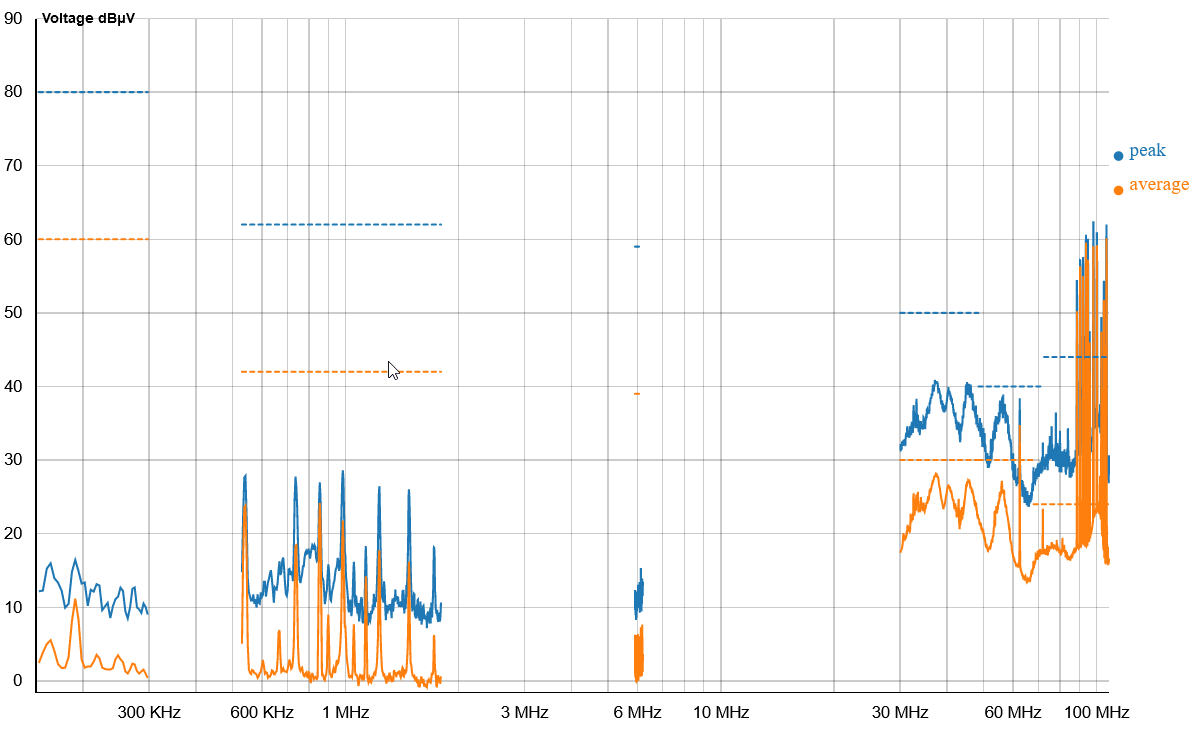
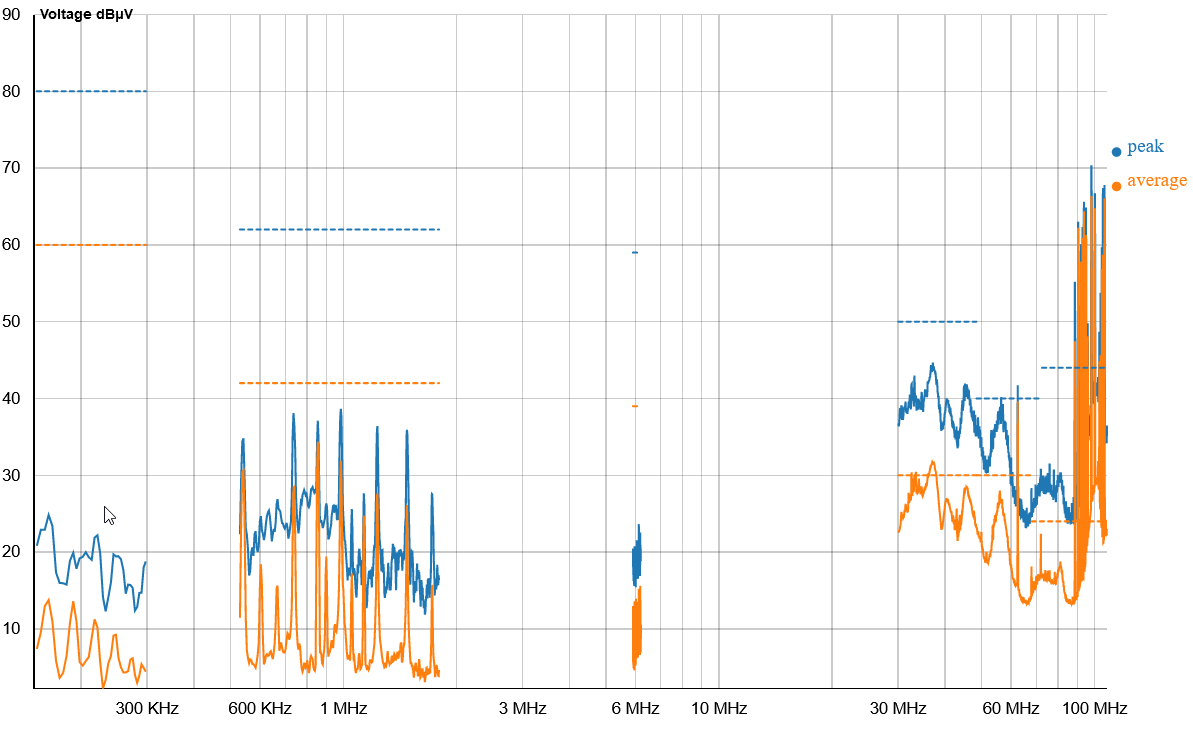
  Clearly, turning off the flash lamp reduced the EMI around 80 MHz by approximately 8 dB.
  Replace the AC/DC power supply with a 24V lithium battery to see if the interference can be further reduced.
Test 3: Test Report Number 2021-06_02094
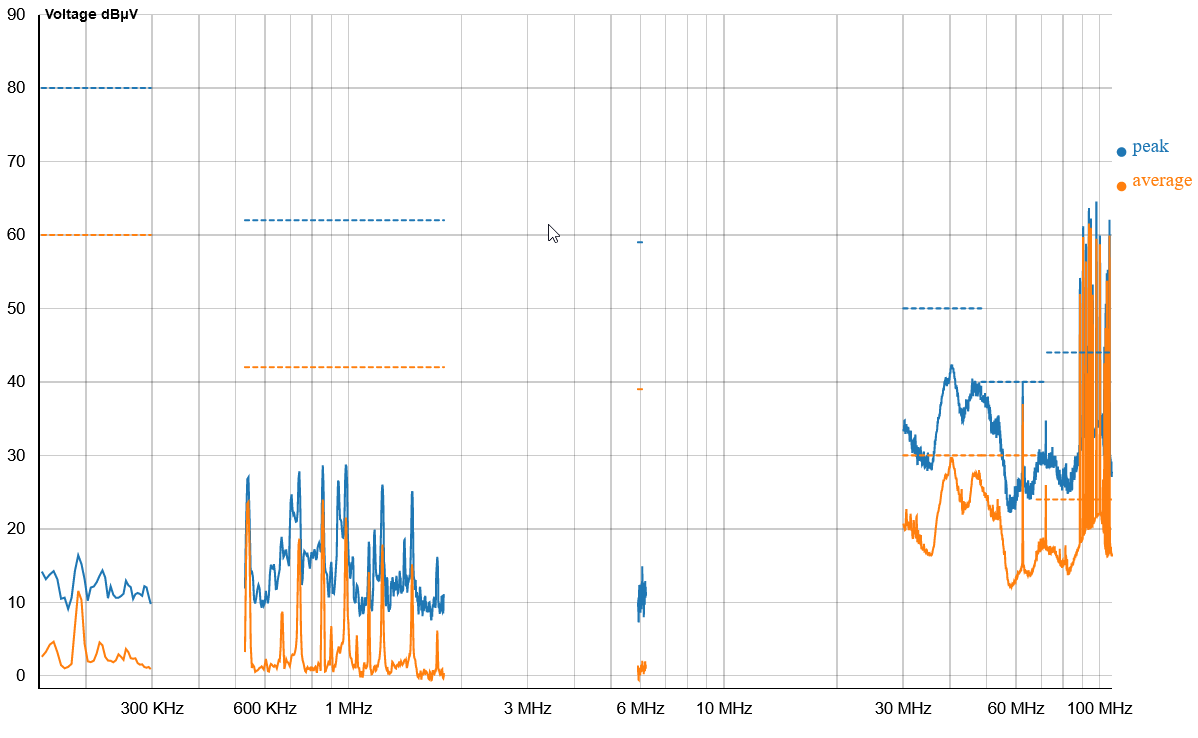
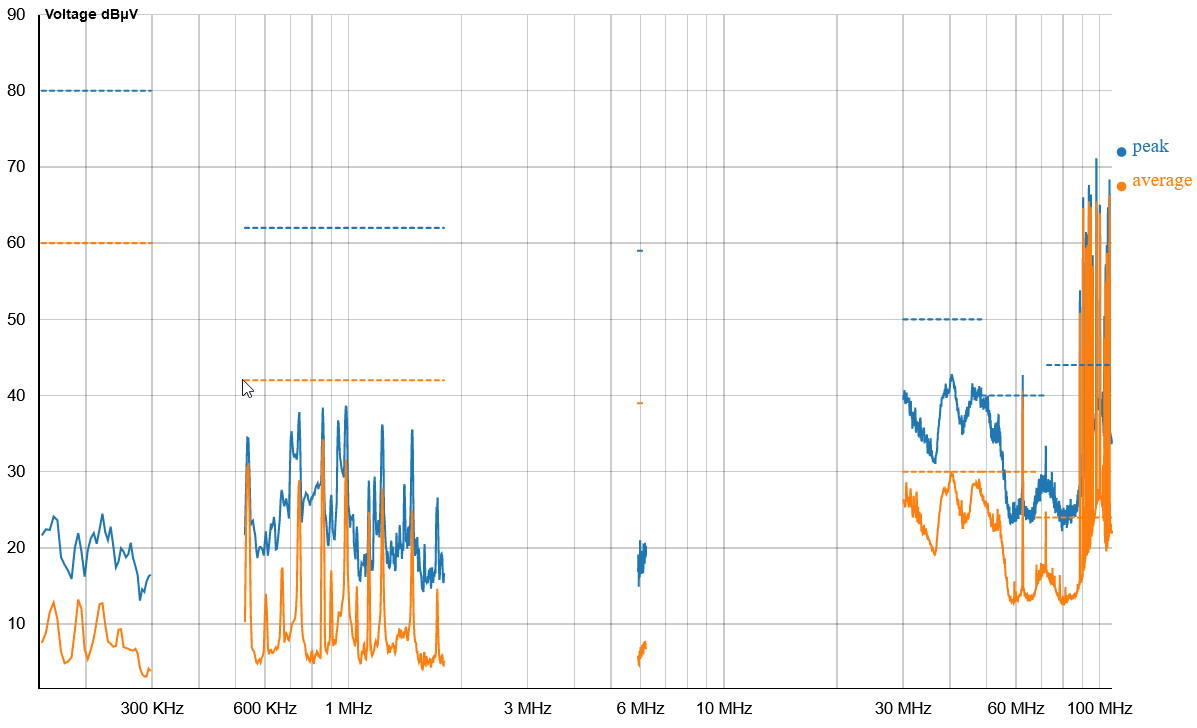
  Clearly, replacing the AC/DC power supply with a battery altered the spectral shape in the 30 MHz to 60 MHz range, but the amplitude did not change significantly.
  Further actions were taken to purify the surrounding electromagnetic environment, including: increasing the distance between the router and the LISN from 1.5 meters to 3.8 meters, turning off the laptop located 1.6 meters from the LISN, and turning off the standing air conditioner located 1.8 meters from the LISN.
  Test 4. Test Report Number 2021-06_02095
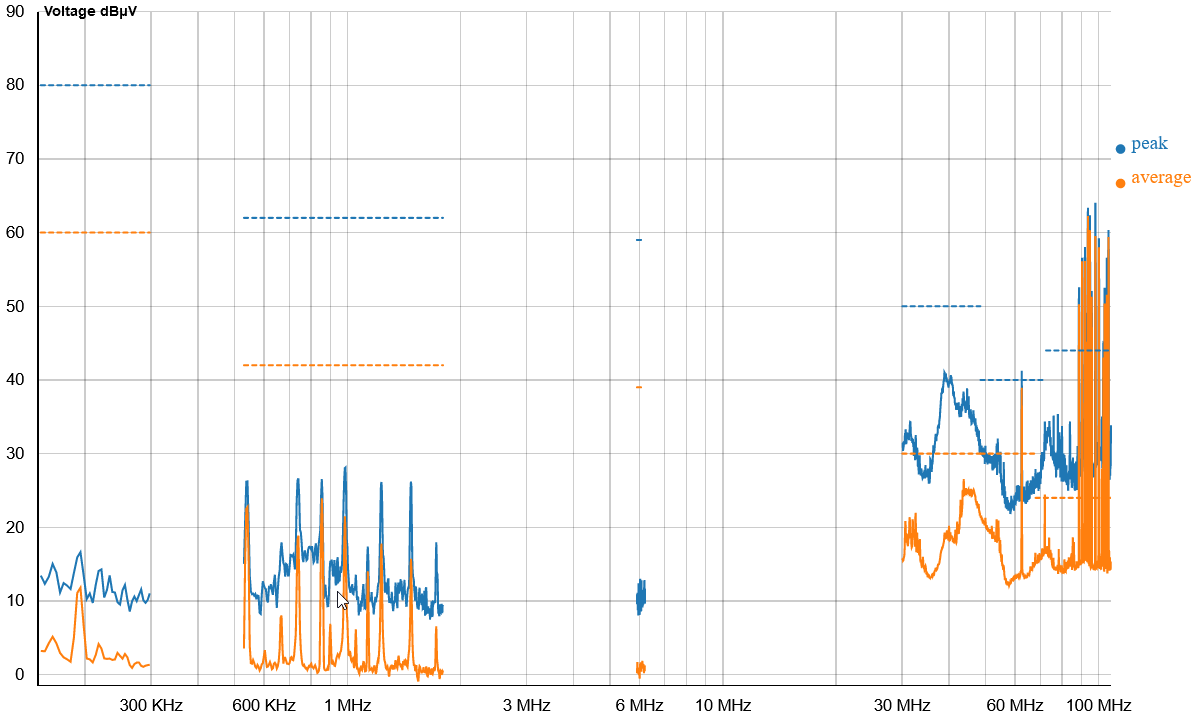

  After applying the environmental interference removal function of MINILAB to eliminate broadcast signal interference, the on-site environmental interference is as follows:
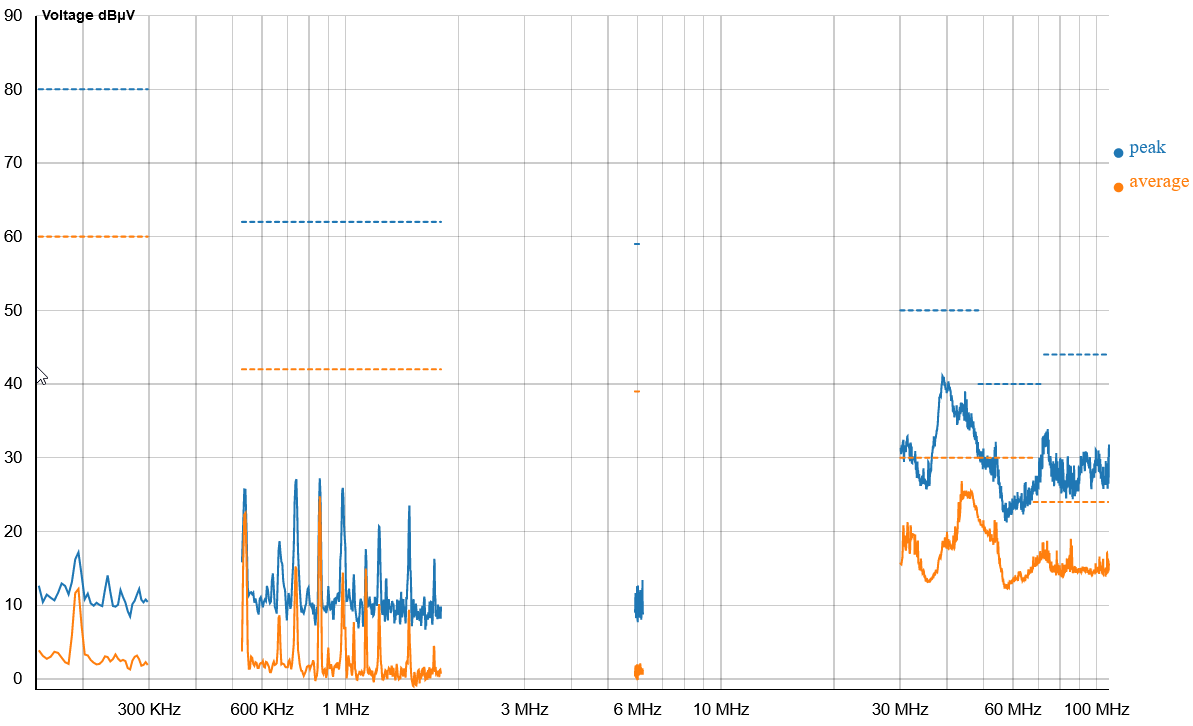
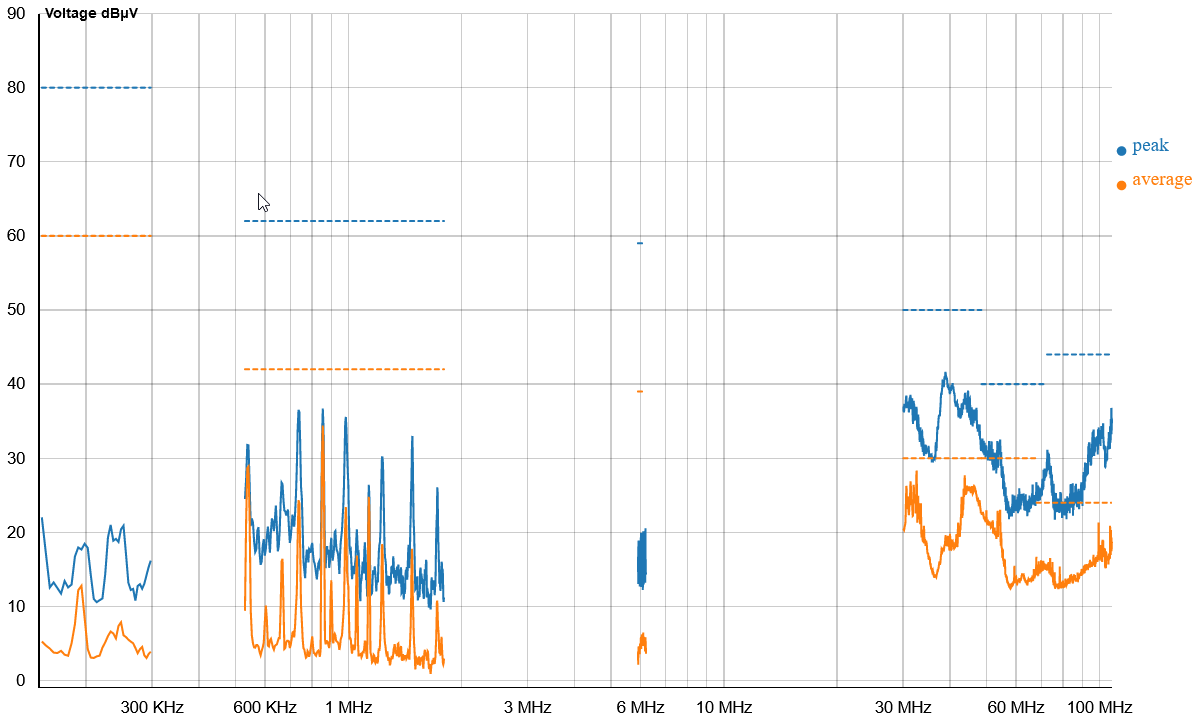
Conclusion
  Ignoring the narrowband interference from broadcast signals within the B frequency band (30 MHz - 108 MHz), and considering the environmental interference tests referenced against CLASS 4, which has a limit line at least 6 dB lower than the CLASS 3 limit line, this environment is suitable for conducting conducted interference tests for Class 1 to Class 3 levels according to GB/T18655-2018. Additionally, it is capable of performing CLASS 4 level measurements for EMI around 34 MHz as required by this case.
Postscript
Discovering that your own office is a "suitable EMC testing environment" is a rare and fortunate coincidence. Not everyone has such luck; however, with resilient patience, extraordinary imagination, and keen observation, you can find an ideal testing environment, such as a conference room, reading room, or even a cafeteria. You can also monitor environmental interference at different times of the day and choose to conduct tests during periods of low interference, such as after your colleagues have turned off their computers and left for the day.Don't forget to turn off the EUT power and test the environmental interference before pressing the start test button once the EUT is ready. This not only confirms whether the environment is suitable for EMC testing but also allows you to use the cloud computing capabilities of MINILAB to remove environmental interference from the test results. Typically, during several hours of testing, environmental interference will not change significantly.